No. 796-A: Industrial Production Benchmark Revision
SUPPLEMENTAL COMMENTARY NUMBER 796-A
Industrial Production Benchmark Revision
April 3, 2016
___________
Heavy Downside Revisions to Manufacturing and Consumer Sectors
Deeper Quarterly Production Contractions Foreshadow GDP Changes
Industrial Production Revised Back to Below its Pre-Recession High
Level of February 2016 Production Revised Lower by 2.5% (-2.5%)
___________
PLEASE NOTE: The next regular Commentary, remains scheduled for Tuesday, April 5th, covering the full February trade deficit. The review of the just-released annual benchmark revision to industrial production, however, is covered in this special Supplemental Commentary, in advance of the previously planned publication.
Best wishes to all — John Williams
BRUTAL DOWNSIDE REVISIONS TO INDUSTRIAL PRODUCTION
INDICATE SIMILAR HITS AHEAD FOR RETAIL SALES, DURABLE GOODS AND GDP
Industrial Production in Deepening Downturn. The Federal Reserve Board (FRB, Fed) released its 2016 Industrial Production Benchmark Revision on April 1st. The new data—reflecting more-complete and better-quality detail for recent years—showed sharp downside revisions to previously-estimated, industrial-production activity and growth, in the nearly seven years since the headline June 2009 trough of the economic collapse. Generally, the pace of downside revisions accelerated, moving forward in time, with broadly deteriorating growth, and deepening contractions seen in the prior estimates of monthly, quarterly and annual production activity, particularly in the last two years.
Among the three production-industry groups, the revisions were sharply to the downside for the manufacturing sector, with relatively minimal changes to the utilities and mining sectors (as seen respectively in Graphs 5, 10 and 11. Implications for pending major benchmark revisions in other series generally were negative. For retail sales on April 29th, consider consumer goods Graphs 7 to 9. For new orders for durable goods on May 18th, consider consumer durable goods Graph 8, along with the general equipment category (not graphed), including defense, having suffered similar downside revisions.
Headline GDP Reporting Currently Is Based on the Red Line. Graph 1 shows total industrial production, both before the benchmarking (red line) and after (black line). The GDP benchmarking on July 29th will be against the black line, where the production revisions effectively have locked in downside revisions to the historical GDP. That area will be revisited subsequent to the other benchmarkings, along with some estimates as to specific impact on the GDP revisions.
Graph 1: Benchmark-Revised Index of Aggregate Industrial Production since 2000

February 2016 Industrial Production No Longer Stands Above Its Pre-Recession High. The FRB headlined that “Relative to earlier reports, the current rates of change are lower, especially for 2014 and 2015. Total IP [Industrial Production] is now estimated to have returned to its pre-recession peak in November 2014, six months later than previously estimated.” That full-recovery milestone moved from May 2014 to November 2014. The Fed did not mention, though, that November 2014 was the peak in production activity. Production turned down thereafter (as in December 2014 being the onset of a “new” recession), falling in March 2015 back below its November 2007 pre-recession high. As of the revised February 2016 numbers, total production stood 1.46% (-1.46%) below that pre-recession peak. Pre-benchmarking, February 2016 production had been above the pre-recession high by 1.11%.
The sharply-negative 2016 benchmarking, was the second such set of massive downside revisions in as many years (see Commentary No. 737), when the prior 2015 benchmarking of July 23, 2015, knocked down headline activity in the dominant, manufacturing sector, so that manufacturing had not, and still has not recovered its pre-recession high. Before the current benchmarking, manufacturing was shy of a full recovery by 2.72% (-2.72%). Post-revision, manufacturing now is shy by 5.82% (-5.82%).
Tumbling Quarterly and Annual Growth. Reviewing the revisions to headline quarterly production growth on both an annualized and year-to-year basis, from fourth-quarter 2014 to date, consider that the year-to-year numbers were against data that separately had just been revised lower.
The benchmarked, headline, annualized quarterly rates of change for industrial production were growth of 3.68% [previously 4.70%] in fourth-quarter 2014, a contraction of 1.85% (-1.85%) [previously down by 0.35% (-0.35%)] in first-quarter 2015, a second-quarter 2015 contraction of 2.75% (-2.75%) [previously down by 2.30% (-2.30%)], a third-quarter 2015 gain of 1.53% [previously up by 2.59%], a fourth-quarter 2015 contraction of 3.22% (-3.22%) [previously down by 3.12% (-3.12%)], and a two-month based contraction trend of 0.51% (-0.51%) [previously down by 0.17% (-0.17%)] in first-quarter 2016.
Year-to-year rates of change in quarterly production were for growth of 3.47% [previously up 4.47%] in fourth-quarter 2014, growth of 2.43% [previously up by 3.47%] in first-quarter 2015, a second-quarter 2015 gain of 0.36% [previously up by 1.45%], a third-quarter 2015 gain of 0.12% [previously up by 1.13%], a fourth-quarter annual contraction of 1.59% (-1.59%) [previously down by 0.82% (-0.82%)], and a two-month based trend, annual decline of 1.26% (-1.26%) [previously down by 0.78% (-0.78%)] in first-quarter 2016. These revisions are reflected in the accompanying Graphs 1 to 17 (be sure to see the note on the distorted FRB graphs).
Regular Reporting Resumes on April 15th. The regular reporting of headline March 2016 industrial production and new revisions to recent months follow on April 15th (Commentary No. 800). More benchmarking information will follow in that coverage. Subscribers looking for specific detail are invited to make a request by e-mail to johnwilliams@shadowstats.com. We shall do our best to accommodate your needs. Prior monthly reporting detail is found in Commentary No. 793 of March 17th.
Fed’s Distorted Production-Revision Graphs and ShadowStats’ Corrections. The accompanying ShadowStats graphs reflect the prior and revised production series on a consistent basis. The graphs in the FRB’s press release do not, visually understating the downside benchmark revisions.
Indexed with the annual average for 2012 = 100, growth rates for the Index of Industrial Production (IIP) are not affected by the index-base year. There may be problems in terms of comparative, graphic-level representations for pre- and post-benchmarking periods, however, if revisions pre-date the index year, as just happened. The Fed’s revision graphs, in the opening link to their report, are misleading. Both the original and revised series are indexed to 2012 and plotted in comparison, but the year 2012 in the benchmarking was revised lower by 0.46%, before being re-indexed to 2012 = 100. Plotting the upside, re-indexed revisions, versus the original series, artificially boosts the visual plot of the revisions by a relative 0.46% for the headline total production. The differences vary largely by series.
In prior Commentary No. 796, I mistakenly headlined a 2.01% (-2.01%) downside revision for the February 2016 total production level, taking the simple difference between the new and old index numbers for February 2016. In reality, that downside revision was 2.46% (-2.46%), due to the particular phenomenon with the re-indexing of the revised data.
The data were revised back only to January 1972, but if one views both the revised and prior series back to 1919, they no longer have a common starting point. The revised series still is 0.46% higher than what it should have been, in its prior, equivalent level, for purposes of plotting the series on a comparative basis. As result, the Fed’s comparative graphs show “upside” revisions to some series, pre-2012, where the revisions then actually were negative. In such a circumstance, the revised plot comparisons pivot to the upside in the earlier years, around the 2012 point of equivalence.
Graphs 1 to 17 are plotted with the headline, revised series, as published, versus the prior, original series plotted on a fully consistent basis. The old data have been adjusted to account for the re-indexing distortions (boosted by 0.46%), so that both the old and new series’ common starting points indeed are “common,” with the actual revisions surfacing only after January 1972.
Schedule of Graphs
Index of Industrial Production
Graph 1 (Repeated): Benchmark-Revised Index of Industrial Production since 2000
Graph 2: Aggregate Industrial Production, Revised Year-to-Year Percent Change since 2000
Graph 3: Benchmark-Revised Index of Industrial Production since 1945
Graph 4: Industrial Production, Revised Year-to-Year Percent Change since 1945
Manufacturing
Graph 5: Benchmarked Industrial Production - Manufacturing (78.5% of the Aggregate in 2015)
Graph 6: Manufacturing, Revised Year-to-Year Change
Graph 7: Benchmarked Manufacturing - Consumer Goods (27.1% of the Aggregate in 2015)
Graph 8: Benchmarked Manufacturing - Durable Consumer Goods (6.4% of the Aggregate in 2015)
Graph 9: Benchmarked Manufacturing - Nondurable Consumer Goods (20.7% of the Aggregate in 2015)
Utilities
Graph 10: Benchmarked Industrial Production - Utilities (10.8% of the Aggregate in 2015)
Mining
Graph 11: Benchmarked Industrial Production - Mining, Including Oil and Gas (10.8% of the Aggregate)
Graph 12: Benchmarked Mining - U.S. Oil & Gas Extraction
Graph 13: Benchmarked Mining - Drilling for Oil & Gas
Graph 14: Benchmarked Mining - Coal
Graph 15: Benchmarked Mining - Gold and Silver
Inflation-Corrected Production
Graph 16: Benchmark-Revised, Indexed Headline Level of Industrial Production (Jan 2000 = 100)
Graph 17: Revised, ShadowStats-Corrected Level of Industrial Production (Jan 2000 = 100)
Graph 1 (Repeated): Benchmark-Revised Index of Industrial Production since 2000

Graph 2: Aggregate Industrial Production, Revised Year-to-Year Percent Change since 2000

Graph 3: Benchmark-Revised Index of Industrial Production since 1945

Graph 4: Industrial Production, Revised Year-to-Year Percent Change since 1945

Graph 5: Benchmarked Industrial Production - Manufacturing (78.5% of the Aggregate in 2015)
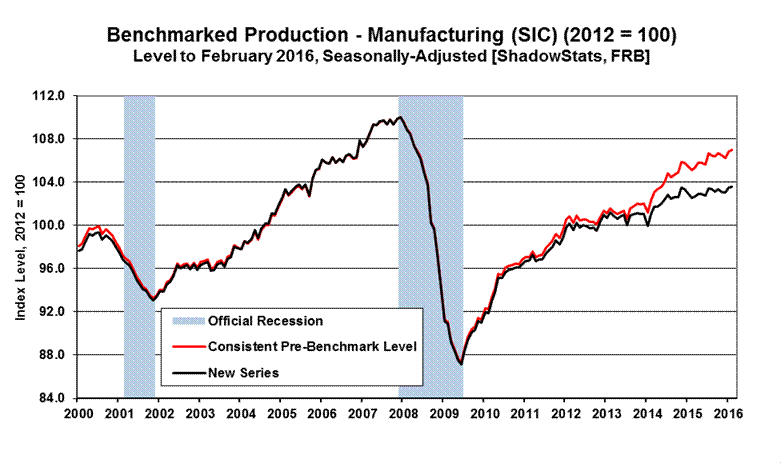
Graph 6: Manufacturing, Revised Year-to-Year Change
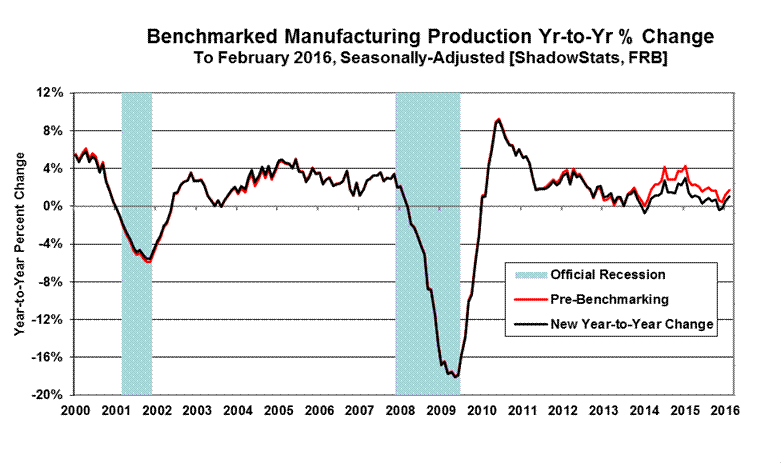
Graph 7: Benchmarked Manufacturing – Consumer Goods (27.1% of the Aggregate in 2015)

Graph 8: Benchmarked Manufacturing – Durable Consumer Goods (6.4% of the Aggregate in 2015)
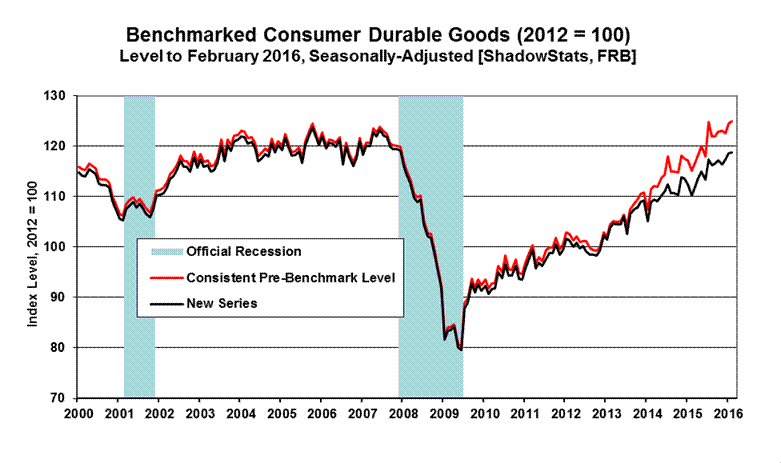
Graph 9: Benchmarked Manufacturing – Nondurable Consumer Goods (20.7% of the Aggregate in 2015)
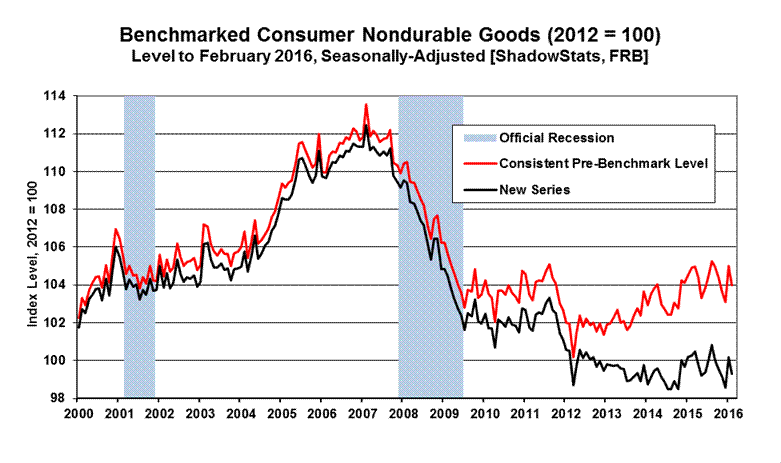
Graph 10: Benchmarked Industrial Production - Utilities (10.8% of the Aggregate in 2015)
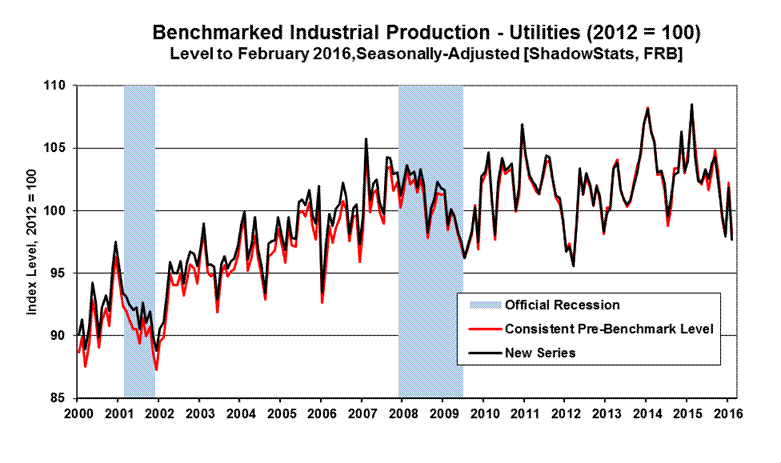
Graph 11: Benchmarked Industrial Production - Mining, Including Oil and Gas (10.8% of the Aggregate in 2015)
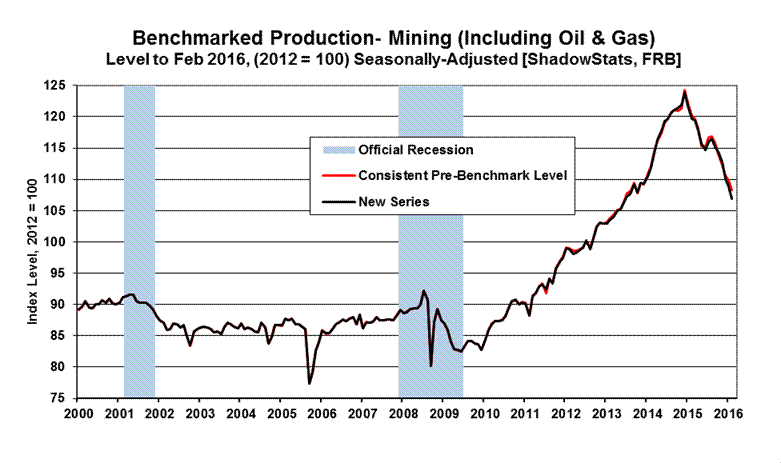
Graph 12: Benchmarked Mining – U.S. Oil & Gas Extraction
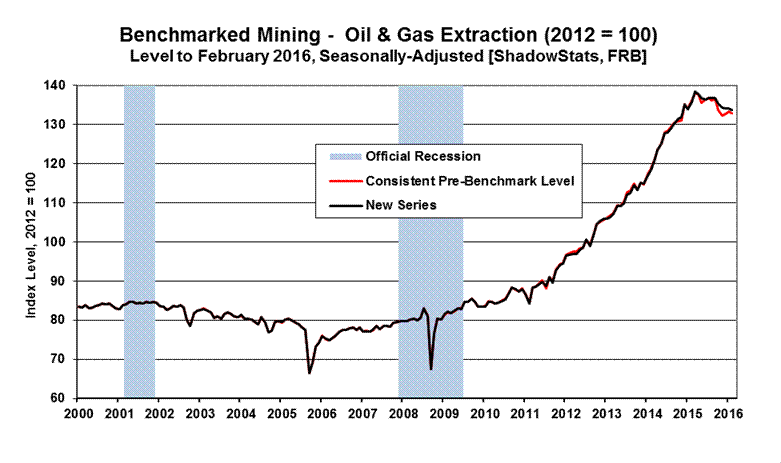
Graph 13: Benchmarked Mining - Drilling for Oil & Gas
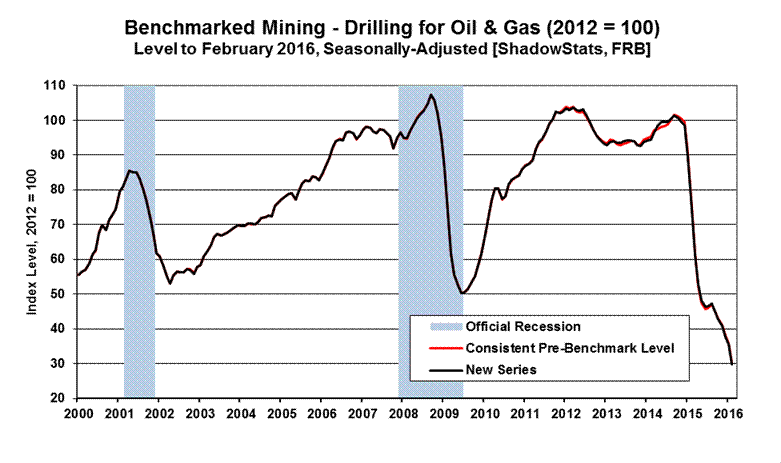
Graph 14: Benchmarked Mining - Coal
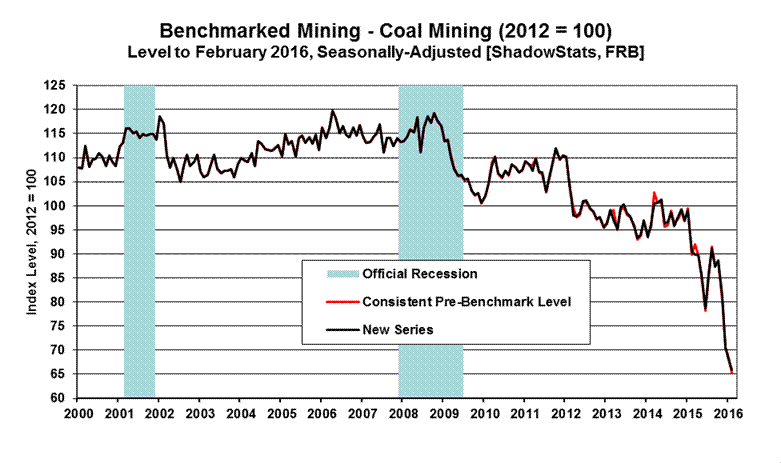
Graph 15: Benchmarked Mining – Gold and Silver
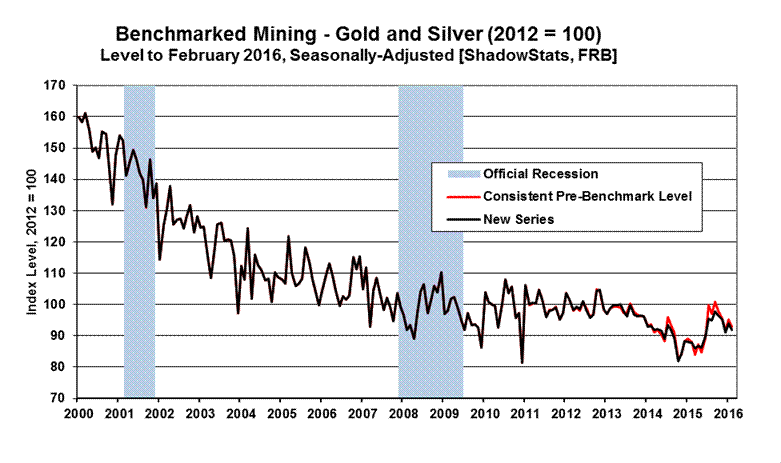
Inflation-Corrected Industrial Production. The revised detail of the headline level of aggregate industrial production is found in Graph 1. Regularly updated in the monthly Commentaries covering industrial production, Graphs 16 and 17—shown on the next page—also have been revised, addressing reporting quality issues tied just to the overstatement of headline production activity that results from the FRB using too-low an estimate of inflation in deflating certain components of industrial production.
Graph 16 shows the new headline industrial production reporting, but indexed to January 2000 = 100, instead of the Fed’s formal index that is set at 2012 = 100. The 2000 indexing simply provides for some consistency in the series of revamped “corrected” graphics (including real retail sales, new orders for durable goods and the GDP). The re-indexing does not affect the appearance of the graph or reported growth rates (as can be seen with a comparison to the earlier Graph 1).
Graph 17 is a recast version of Graph 16, corrected for the estimated understatement of hedonic-inflation adjustments used in headline production reporting. See Commentary No. 793 of March 17th for a full discussion. The circumstance will be reviewed, anew, along with the April 15th release of the March 2016 headline production detail.
Graph 16: Benchmark-Revised, Indexed Headline Level of Industrial Production (Jan 2000 = 100)
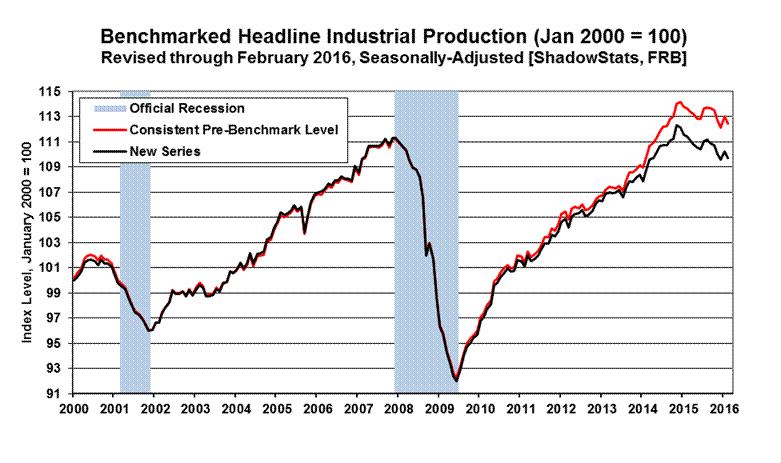
Graph 17: Revised, ShadowStats-Corrected Level of Industrial Production (Jan 2000 = 100)
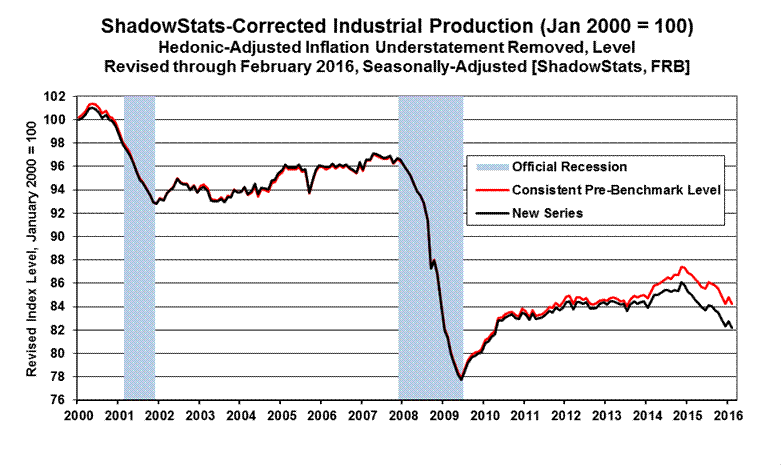
__________